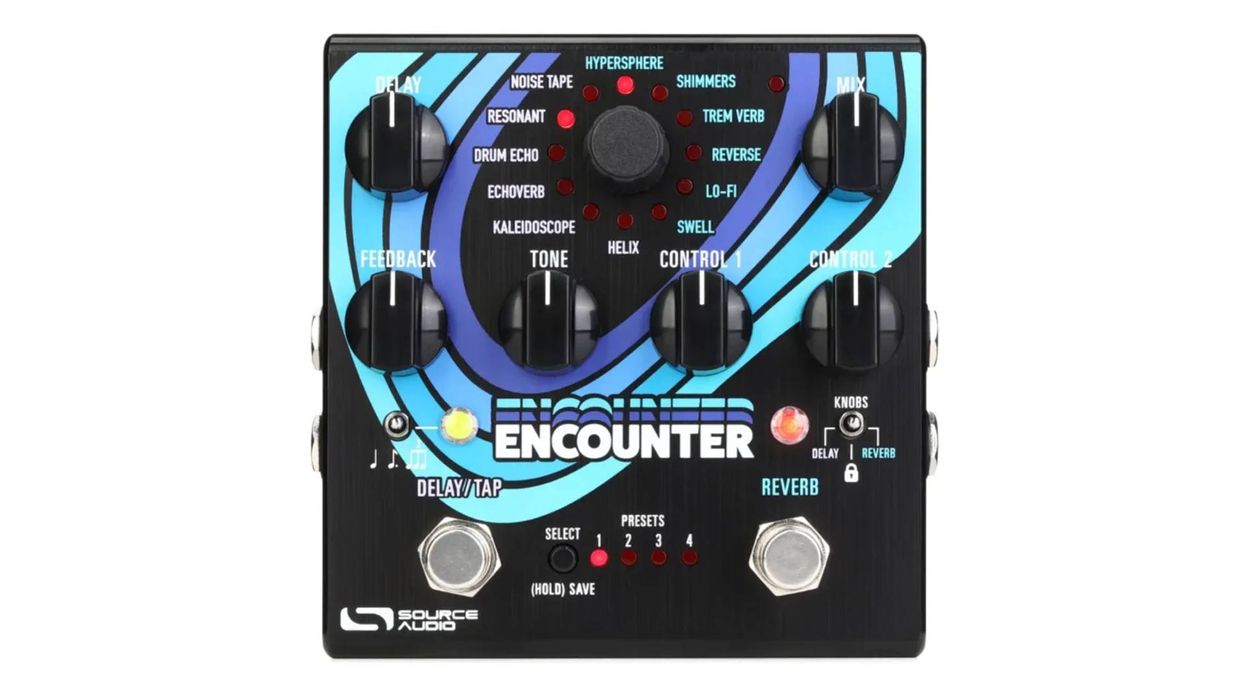The N-Tune onboard tuner aims to simplify
the tuning process affordably, and without
requiring permanent modifications to your
guitar. With true bypass design available in
either a 250k or 500k ohm pot (for single-coil
pickup or humbucker-equipped guitars), the
N-Tune is basically a DIY kit that allows you to
put a +/- 2 cents accurate tuner right on your
guitar that operates using the volume knob:
pull it up for silent tuning; push down to play.
The kit requires nothing more than standard
soldering tools to install.
I put it on a Squier Telecaster in less than half-an-hour. It is fully chromatic, easy to use, and
gives a little light show when you pull up the
knob. Since I wasn’t as focused on the task of
replacing the existing pot as I should’ve been,
I’ll offer one additional pointer from my experience
installing it: make sure there’s enough
room in the guitar’s control cavity for a 9V battery—
measure it, don’t eyeball it (like me), or
you’ll end up jury-rigging it to make it fit.
There are pluses and minuses to an onboard
tuner. If you’ve lost track of one tuner after
another, because you forget where you put
the thing down, or because somebody asked
to “borrow it for a sec,” this solves your problem.
You’ll always know where it is (provided
you’re not the kind who misplaces guitars),
and you can shrug blithely while pointing to
your axe if someone asks to use your tuner.
On the other hand, you can only tune one guitar
with it, and batteries don’t last forever.
While I’m not completely sold on the utility of
an onboard tuner, the makers of the N-Tune
did address the concerns I had about it. I’m
not crazy about having to open up the guitar
for every battery replacement, but Zero
Crossing estimates a standard 9V will provide
power for around six-hundred tunings, so it
wouldn’t be a regular chore.
Also, the kit inclues tuning rings in several
colors to suit different guitars—white, black,
parchment, Fender-Cream and Gibson-
Crème—but it’s not an unlimited choice. There
wasn’t a perfect fit (aesthetically speaking) for
the chrome barrel knobs on my Squire Tele, but
Zero Crossing informs me that they will offer
chrome and other metallic tuning rings in the
near future. If you like the idea of an onboard
tuner, N-Tune is sure worth a try.
Search
Latest Stories
Start your day right!
Get latest updates and insights delivered to your inbox.
Premier Guitar features affiliate links to help support our content. We may earn a commission on any affiliated purchases.
The Latest
More for you
Most Popular
Don’t Miss Out
Get the latest updates and insights delivered to your inbox.
Load More










![Rig Rundown: Russian Circles’ Mike Sullivan [2025]](https://www.premierguitar.com/media-library/youtube.jpg?id=62303631&width=1245&height=700&quality=70&coordinates=0%2C0%2C0%2C0)







